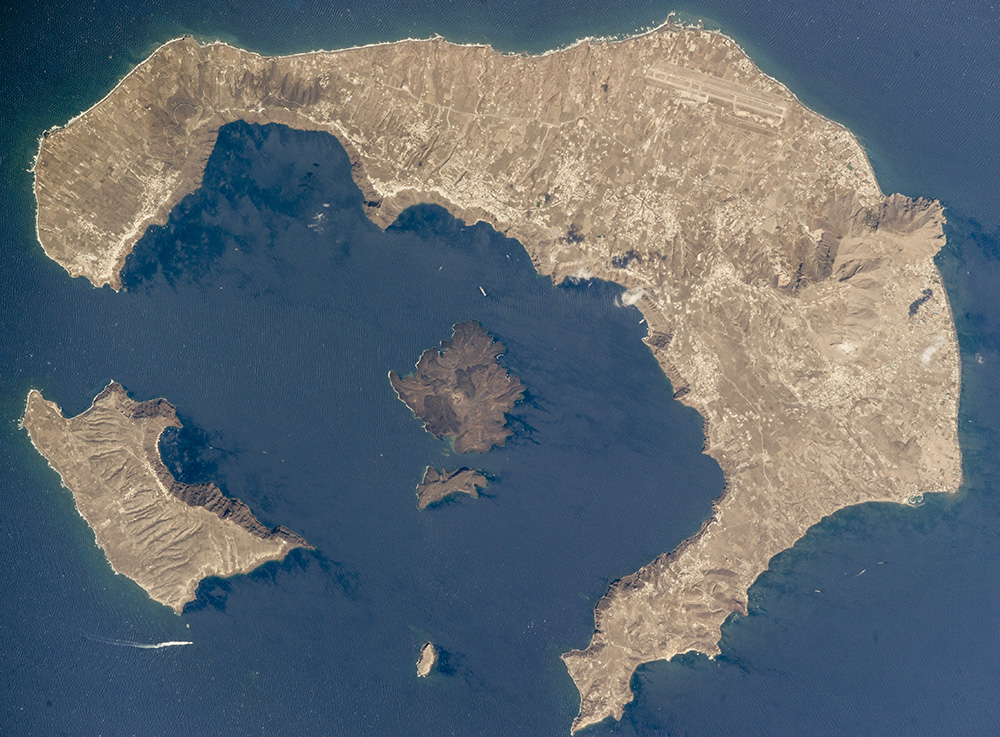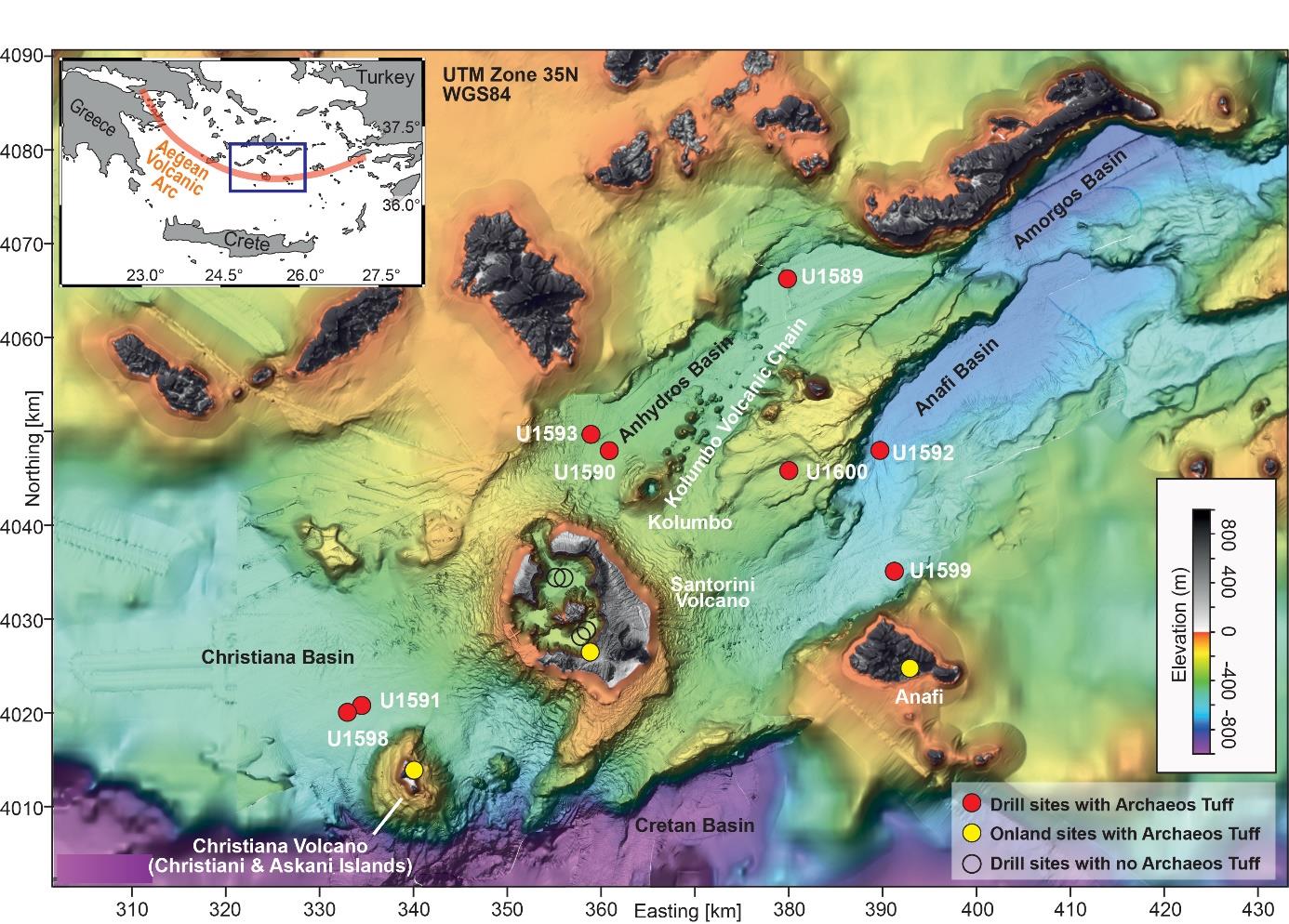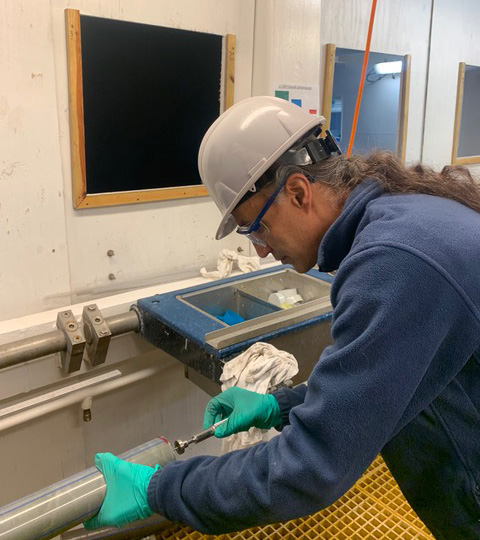Historic Santorini Eruption Pales in Comparison to Ancient Blowout
Evidence for huge underwater eruption 500,000 years ago, part of a still-active volcanic arc in the Aegean

Public domain
One of the most explosive volcanic eruptions ever witnessed by humans took place 3,600 years ago, around 1,600 B.C.E., off the island of Santorini in the Eastern Mediterranean.
That eruption covered Santorini — part of the submerged volcano's rim — with ash and pumice, wiping out the inhabitants and, as some historians believe, leading to the decline of the Minoan civilization centered on the island of Crete about 140 kilometers (km) away.

Similar sized eruptions of the Santorini volcano are known to have occurred at least 12 times over the past 360,000 years, but new data from an international drilling project show that the biggest one of all took place about 520,000 years ago. The underwater blowout created pyroclastic flows 10 times larger than those produced during the 2022 submarine eruption of Hunga Tonga-Hunga Ha’apai in the southwest Pacific Ocean.
"We discovered a 500,000-year-old eruption from ancestral Santorini that was as big as any in the Eastern Mediterranean. This is much larger than the eruption that made the present-day caldera of Santorini in around 1,600 B.C.E.," said Michael Manga, professor of earth and planetary science at the University of California, Berkeley, and one of the principal investigators for the drilling project. "We identified about 10 times more eruptions than we previously knew about, and this is one of the best studied places on Earth!"
A paper describing the results of the project was published Jan. 15 in the open-access journal Communications Earth & Environment, which is part of Nature Portfolio.
The 2022-2023 drilling project, Expedition 398 of the International Ocean Discovery Program (IODP), focused on the Hellenic Arc Volcanic Field that runs from mainland Greece through the Cyclades island arc to the coast of Turkey. A major motivation for the drilling was to reconstruct the volcanic history of the area in light of seismic unrest in the Santorini caldera in 2011 and 2012 and the presence of two magma chambers under an area that attracts upward of 2 million tourists every year.

"Understanding volcanic eruptions requires that we know their history — where, when and how they erupt, the size of the eruptions and their impact," Manga said. "The goals of the expedition were to determine the history of eruptions from the Southern Aegean volcanic arc, what controls where and when volcanoes form, and how eruptions are modulated by sea level changes from ice ages."
Reconstructing eruption history is particularly difficult for underwater volcanoes, which don't always leave evidence on land. The expedition drilled holes at 11 sites under the waters of the Aegean Sea around Santorini, or Thera, the official name of the island, for a total depth of 7 km, and retrieved more than 3 km of cores that are a record of more than 1 million years of history, Manga said.
These cores revealed a 520,000-year-old layer of pumice, the Archaeos Tuff, that the scientific team attributes to a shallow underwater eruption. The eruption column breached the sea surface and covered three islands in thin volcanic deposits. Pyroclastic currents discharged under the sea entrained water and transformed into turbidity currents and slurries covering the seafloor up to 70 km away from the underwater vent, forming a submarine deposit with a volume larger than about 90 km3 — six times bigger than the pyroclastic current deposits of the 1,600 B.C.E. Minoan eruption. These Archaeos Tuff deposits are up to 150 meters thick, 30 times the thickness of those left by the Minoan eruption.
Despite this violent early history, the scientists say that it is very unlikely that the Christiana-Santorini-Kolumbo Volcanic Field surrounding Santorini will have such a large eruption in the near future.

"Our study showed how volcanic history preserved on land is very incomplete. We need to visit and sample those basins to reconstruct eruption history," Manga said.
The two-month expedition was conducted as part of the IODP, a multidecadal, international research program supported by 22 nations with the goal of exploring Earth's history and structure recorded in seafloor sediments and rocks and monitoring sub-seafloor environments. Expedition 398 sailed with 32 scientists with expertise in a range of geoscience disciplines and representing nine countries. The expedition was co-led by Tim Druitt of Clermont-Auvergne University in Clermont-Ferrand, France, and Steffen Kutterolf of the Geomar Helmholtz Centre for Ocean Research in Kiel, Germany.
